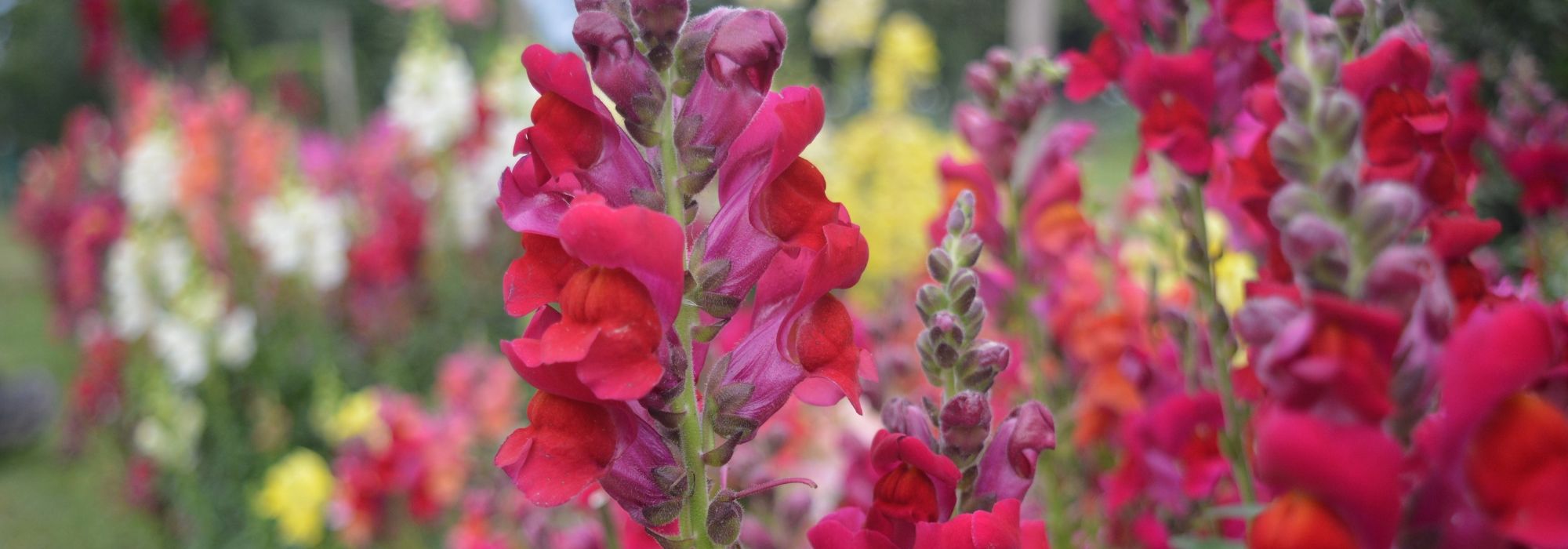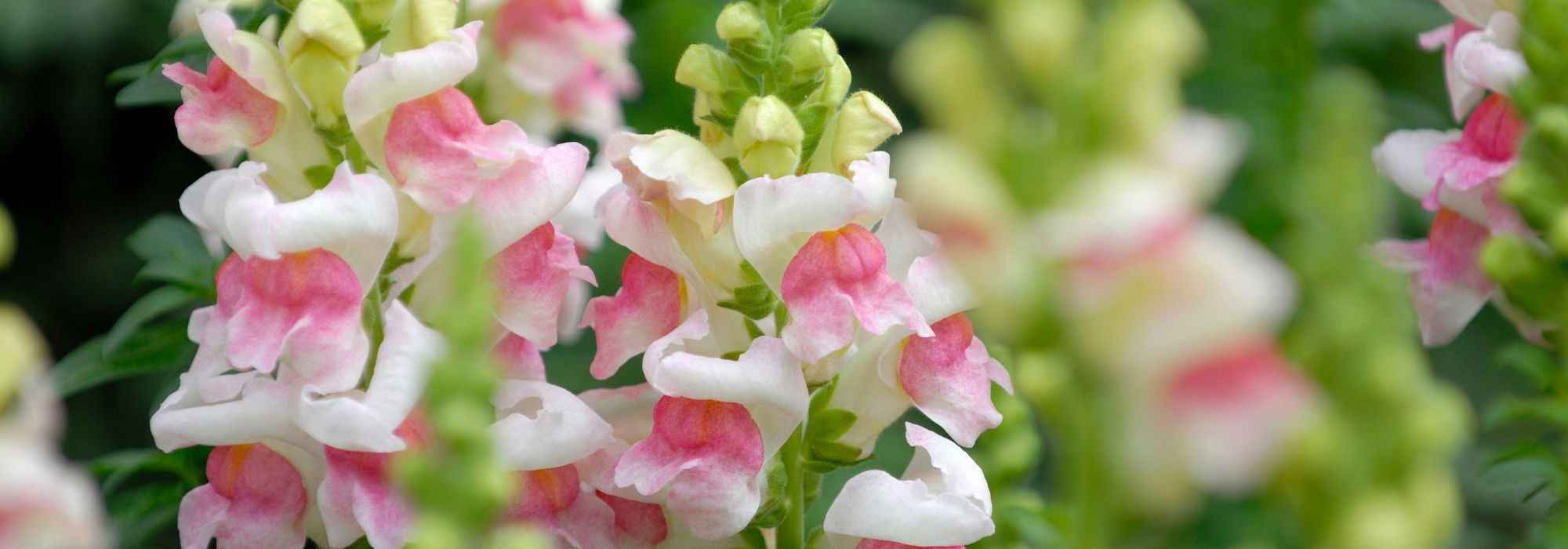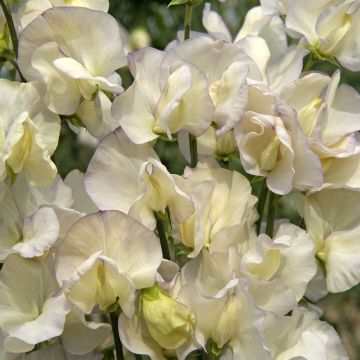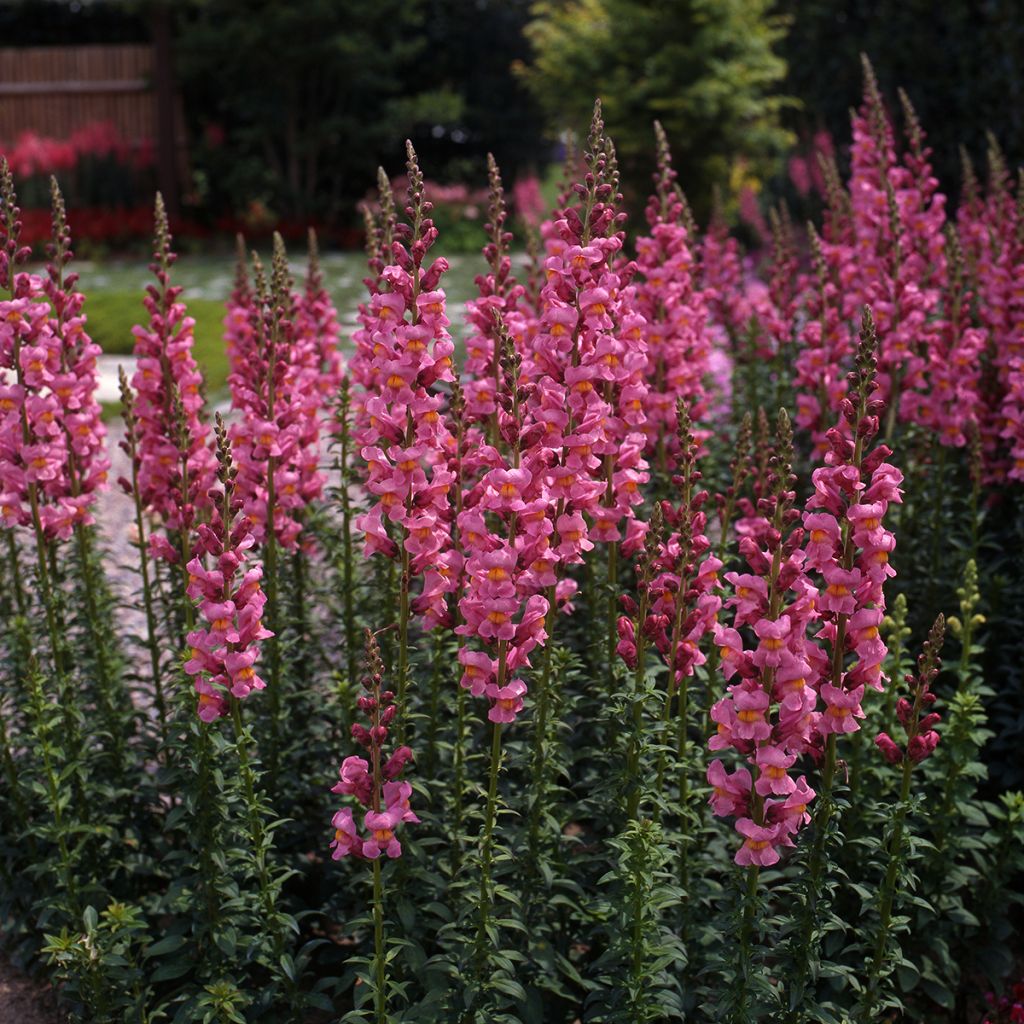

Snapdragon Rocket Rose Shades seeds - Antirrhinum majus
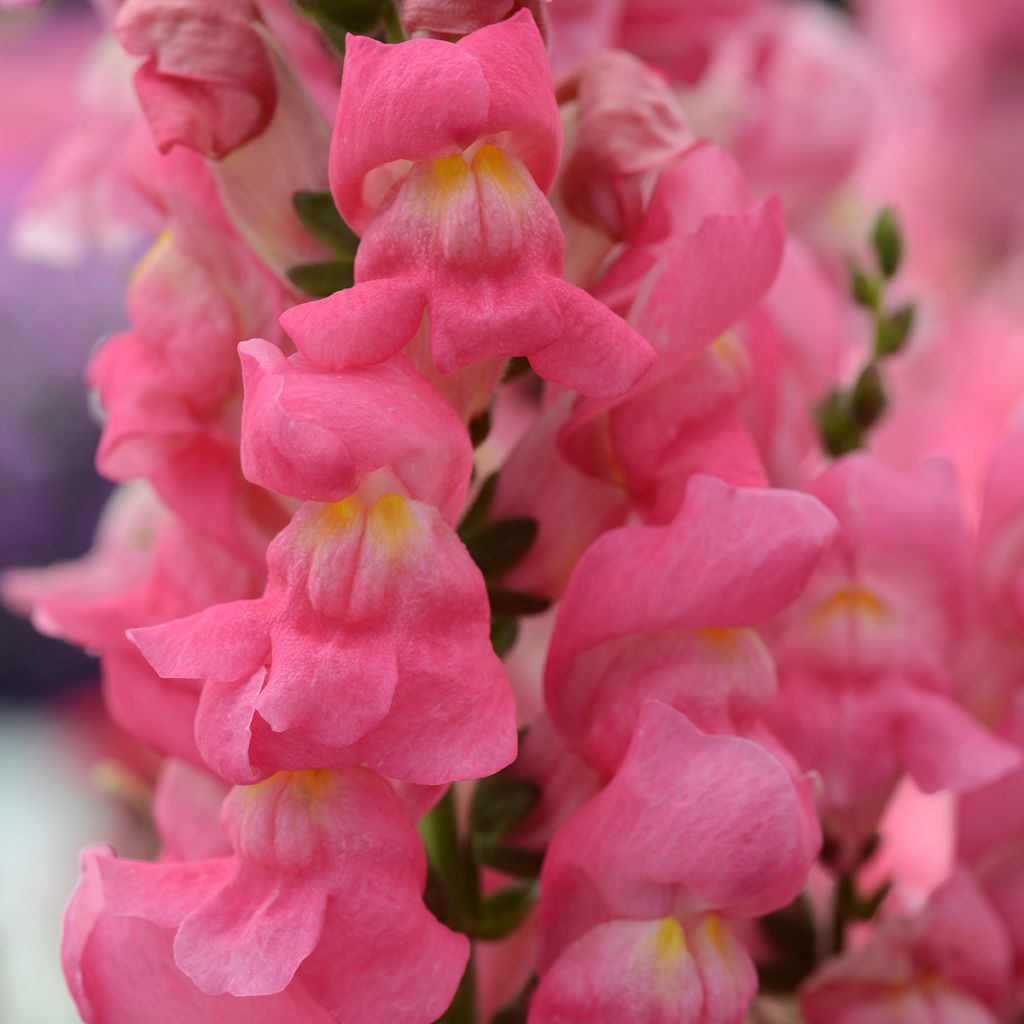

Snapdragon Rocket Rose Shades seeds - Antirrhinum majus
Snapdragon Rocket Rose Shades seeds - Antirrhinum majus
Antirrhinum x majus Rocket Rose Shades
Snapdragon, Garden Snapdragon
Special offer!
Receive a €20 voucher for any order over €90 (excluding delivery costs, credit notes, and plastic-free options)!
1- Add your favorite plants to your cart.
2- Once you have reached €90, confirm your order (you can even choose the delivery date!).
3- As soon as your order is shipped, you will receive an email containing your voucher code, valid for 3 months (90 days).
Your voucher is unique and can only be used once, for any order with a minimum value of €20, excluding delivery costs.
Can be combined with other current offers, non-divisible and non-refundable.
Home or relay delivery (depending on size and destination)
Schedule delivery date,
and select date in basket
This plant carries a 6 months recovery warranty
More information
We guarantee the quality of our plants for a full growing cycle, and will replace at our expense any plant that fails to recover under normal climatic and planting conditions.
Would this plant suit my garden?
Set up your Plantfit profile →
Description
Snapdragon F1 'Rocket Rose Shades' (Antirrhinum majus) is a hybrid variety with pink flowers selected for cut flowers and bedding displays. It boasts sturdy flower spikes with excellent holding ability. This is a slightly tender, short-lived plant, often grown as an annual. It is easy to cultivate in well-drained soil, in full sun, and it flowers 12 weeks after sowing.
Snapdragon 'Rocket Rose Shades' F1 belongs to the Plantaginaceae family. It is derived from the common snapdragon, also known as lion's mouth or garden snapdragon. Native to the Mediterranean basin, the species Antirrhinum majus is indigenous to southern France. It is found in the eastern Pyrenees and northeastern Spain, in rocky and sunny places. A perennial in its native lands, snapdragon is often cultivated as an annual due to its sensitivity to frost.
Snapdragon 'Rocket F1 Rose Shades', from a series developed by PanAmerican Seed, is a hybrid cultivar selected for its exceptional vigour, heat tolerance and remarkably uniform flowering. This variety is distinguished by its slender, tightly-packed flower spikes, reaching 76 to 91 cm in height in open ground, with a spread of 41 to 46 cm. In a pot, its height is more moderate, between 40 and 60 cm, depending on the container volume. The flowers, grouped in compact clusters, have a tubular corolla with two lips resembling a slightly open mouth when squeezed. In this variety, they are a beautiful palette of pink tones, sometimes highlighted by a golden shimmer in the centre. Flowering lasts from June-July to October, depending on the sowing date. It attracts numerous pollinators like bumblebees, which can force their way into the flowers to feed on the nectar. the slightly fragrant flowers later give way to capsules filled with small seeds. The medium green foliage is composed of single and lanceolate leaves measuring between 3 and 7 cm. The vegetation is deciduous and disappears in winter in climates where snapdragon is grown as an annual.
Snapdragon F1 'Rocket Rose Shades' is superb in sunny beds and large borders. Use it as a background, behind easy and generous perennials like hardy geranium 'Patricia' and Moss Phlox 'White Delight'. Pair it also with love-in-a-mist and poppies in a cottage garden. In a pot, on a sunny terrace, it associates very well with annual lobelias or petunias, for tender summer compositions. It is a charming and generous plant that is light and full, in open ground, in pots and in homemade bouquets!
Warning, seeds reserved for experienced gardeners accustomed to sowing very fine seeds. These seeds are as fine as dust, barely visible to the naked eye.
Snapdragon Rocket Rose Shades seeds - Antirrhinum majus in pictures


Flowering
Foliage
Plant habit
Botanical data
Antirrhinum
x majus
Rocket Rose Shades
Plantaginaceae
Snapdragon, Garden Snapdragon
Cultivar or hybrid
Planting and care
Sow Antirrhinum majus 'Rocket Rose Shades' from January to March on the surface of a well-drained seed compost. Do not cover the seeds. Place in a propagator or seed tray inside a plastic bag, maintaining a temperature of 20-25°C until germination, which usually takes 10 to 21 days. Light aids germination. Transplant the young plants when they are large enough to handle into 8cm trays or pots. Gradually acclimatise the plants to cooler conditions over a few weeks before planting them out in the open ground after all risk of frost has passed, spacing them 23 to 30cm apart.
Snapdragons thrive in fertile, well-drained, loose soils and full sun. The common snapdragon is not very hardy (-6/-7°C), so it is often grown as an annual or biennial. However, it is not uncommon for snapdragons to survive several mild winters, though they may become more susceptible to rust... To try and preserve a beautiful variety, protect the young plants from severe frosts in winter by ensuring good soil drainage and covering the crown with a thick layer of leaves or dry grass: they will regrow in spring and flower earlier.
Sowing period
Intended location
Planting & care advice
This item has not been reviewed yet - be the first to leave a review about it.
Similar products
Haven't found what you were looking for?
Hardiness is the lowest winter temperature a plant can endure without suffering serious damage or even dying. However, hardiness is affected by location (a sheltered area, such as a patio), protection (winter cover) and soil type (hardiness is improved by well-drained soil).

Photo Sharing Terms & Conditions
In order to encourage gardeners to interact and share their experiences, Promesse de fleurs offers various media enabling content to be uploaded onto its Site - in particular via the ‘Photo sharing’ module.
The User agrees to refrain from:
- Posting any content that is illegal, prejudicial, insulting, racist, inciteful to hatred, revisionist, contrary to public decency, that infringes on privacy or on the privacy rights of third parties, in particular the publicity rights of persons and goods, intellectual property rights, or the right to privacy.
- Submitting content on behalf of a third party;
- Impersonate the identity of a third party and/or publish any personal information about a third party;
In general, the User undertakes to refrain from any unethical behaviour.
All Content (in particular text, comments, files, images, photos, videos, creative works, etc.), which may be subject to property or intellectual property rights, image or other private rights, shall remain the property of the User, subject to the limited rights granted by the terms of the licence granted by Promesse de fleurs as stated below. Users are at liberty to publish or not to publish such Content on the Site, notably via the ‘Photo Sharing’ facility, and accept that this Content shall be made public and freely accessible, notably on the Internet.
Users further acknowledge, undertake to have ,and guarantee that they hold all necessary rights and permissions to publish such material on the Site, in particular with regard to the legislation in force pertaining to any privacy, property, intellectual property, image, or contractual rights, or rights of any other nature. By publishing such Content on the Site, Users acknowledge accepting full liability as publishers of the Content within the meaning of the law, and grant Promesse de fleurs, free of charge, an inclusive, worldwide licence for the said Content for the entire duration of its publication, including all reproduction, representation, up/downloading, displaying, performing, transmission, and storage rights.
Users also grant permission for their name to be linked to the Content and accept that this link may not always be made available.
By engaging in posting material, Users consent to their Content becoming automatically accessible on the Internet, in particular on other sites and/or blogs and/or web pages of the Promesse de fleurs site, including in particular social pages and the Promesse de fleurs catalogue.
Users may secure the removal of entrusted content free of charge by issuing a simple request via our contact form.
The flowering period indicated on our website applies to countries and regions located in USDA zone 8 (France, the United Kingdom, Ireland, the Netherlands, etc.)
It will vary according to where you live:
- In zones 9 to 10 (Italy, Spain, Greece, etc.), flowering will occur about 2 to 4 weeks earlier.
- In zones 6 to 7 (Germany, Poland, Slovenia, and lower mountainous regions), flowering will be delayed by 2 to 3 weeks.
- In zone 5 (Central Europe, Scandinavia), blooming will be delayed by 3 to 5 weeks.
In temperate climates, pruning of spring-flowering shrubs (forsythia, spireas, etc.) should be done just after flowering.
Pruning of summer-flowering shrubs (Indian Lilac, Perovskia, etc.) can be done in winter or spring.
In cold regions as well as with frost-sensitive plants, avoid pruning too early when severe frosts may still occur.
The planting period indicated on our website applies to countries and regions located in USDA zone 8 (France, United Kingdom, Ireland, Netherlands).
It will vary according to where you live:
- In Mediterranean zones (Marseille, Madrid, Milan, etc.), autumn and winter are the best planting periods.
- In continental zones (Strasbourg, Munich, Vienna, etc.), delay planting by 2 to 3 weeks in spring and bring it forward by 2 to 4 weeks in autumn.
- In mountainous regions (the Alps, Pyrenees, Carpathians, etc.), it is best to plant in late spring (May-June) or late summer (August-September).
The harvesting period indicated on our website applies to countries and regions in USDA zone 8 (France, England, Ireland, the Netherlands).
In colder areas (Scandinavia, Poland, Austria...) fruit and vegetable harvests are likely to be delayed by 3-4 weeks.
In warmer areas (Italy, Spain, Greece, etc.), harvesting will probably take place earlier, depending on weather conditions.
The sowing periods indicated on our website apply to countries and regions within USDA Zone 8 (France, UK, Ireland, Netherlands).
In colder areas (Scandinavia, Poland, Austria...), delay any outdoor sowing by 3-4 weeks, or sow under glass.
In warmer climes (Italy, Spain, Greece, etc.), bring outdoor sowing forward by a few weeks.






























